Year Round Tomato Growing might seem like a gardener’s impossible dream, especially if you live outside of perpetually sunny climates. But guess what? It’s absolutely achievable with a little know-how and some clever DIY tricks! For centuries, cultures around the globe have cherished tomatoes, from their origins in South America where they were almost considered ornamental, to their explosion in popularity in Italian cuisine. Now, we can enjoy the taste of summer-fresh tomatoes even when the snow is falling outside.
Have you ever felt that pang of disappointment when the last tomato of the season is picked, leaving you craving that juicy, sun-ripened flavor? I know I have! That’s why I’m so excited to share these simple, yet effective, DIY methods that will empower you to extend your tomato harvest and even achieve year round tomato growing. Imagine the satisfaction of biting into a homegrown tomato in the dead of winter – a burst of sunshine on your taste buds! This article will provide you with practical, step-by-step guides and ingenious hacks to create the ideal environment for your tomato plants, regardless of the season. Say goodbye to bland, store-bought tomatoes and hello to a continuous supply of delicious, homegrown goodness!
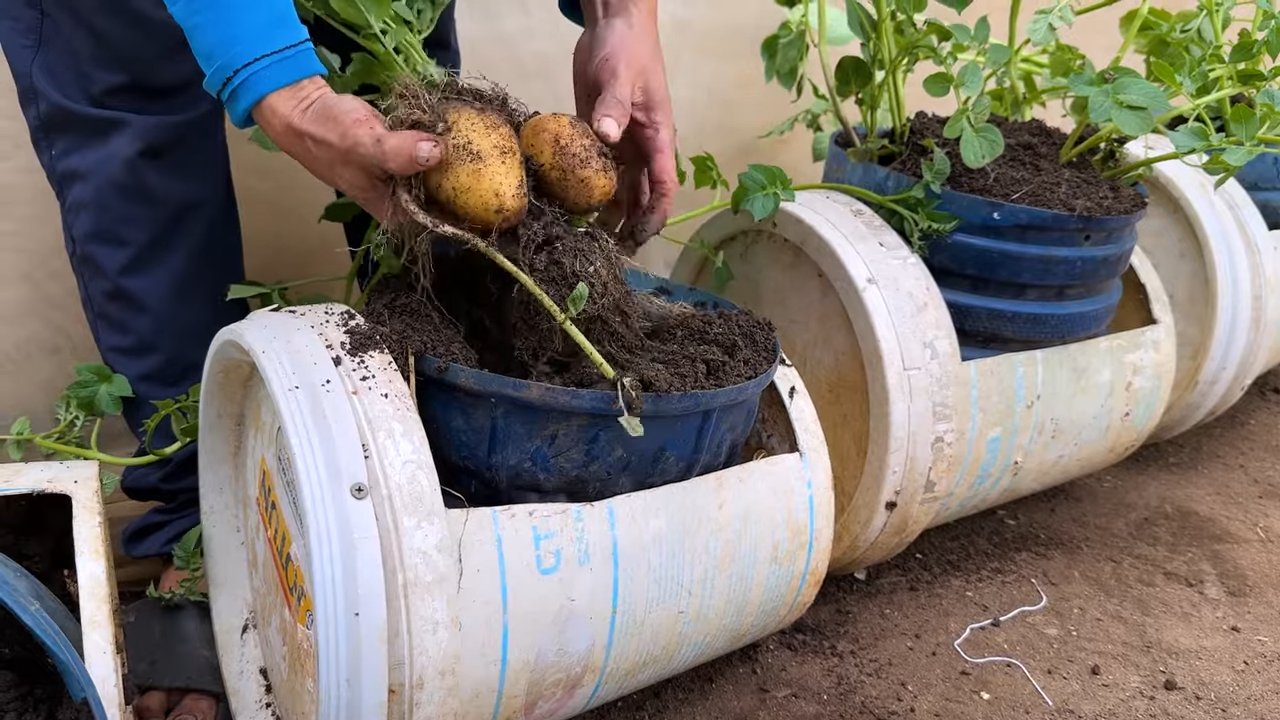
Tomatenzucht das ganze Jahr über: Mein DIY-Gewächshaus für Zuhause
Hallo liebe Gartenfreunde! Habt ihr auch genug davon, dass die Tomatensaison immer so kurz ist? Ich auch! Deshalb habe ich mich entschieden, das Problem selbst in die Hand zu nehmen und ein kleines, aber feines Gewächshaus für den Innenbereich zu bauen. Damit kann ich meine Tomaten das ganze Jahr über ernten. Und das Beste daran: Es ist gar nicht so schwer, wie man denkt! Ich zeige euch, wie ich es gemacht habe.
Was du brauchst: Die Materialliste
Bevor wir loslegen, hier eine Liste aller Materialien, die du für dieses Projekt benötigst. Keine Sorge, vieles davon hast du vielleicht schon zu Hause!
* Regal: Ein stabiles Regal ist die Basis unseres Gewächshauses. Ich habe ein Metallregal mit vier Böden verwendet, aber ein Holzregal tut es auch. Achte darauf, dass es hoch genug ist, damit deine Tomatenpflanzen genügend Platz zum Wachsen haben.
* Klarsichtfolie: Diese Folie wird unser Gewächshaus umschließen und für ein warmes, feuchtes Klima sorgen. Du kannst spezielle Gewächshausfolie verwenden, aber auch eine dicke Baufolie ist geeignet.
* Reißverschluss: Ein Reißverschluss ermöglicht uns einen einfachen Zugang zu den Pflanzen. Ich habe einen langen, robusten Reißverschluss gewählt.
* Klettband: Mit Klettband befestigen wir die Folie am Regal. Es ist praktisch, weil wir die Folie so leicht öffnen und schließen können.
* LED-Pflanzenlampen: Im Winter brauchen unsere Tomaten zusätzliches Licht. LED-Pflanzenlampen sind energieeffizient und geben das richtige Lichtspektrum ab.
* Zeitschaltuhr: Eine Zeitschaltuhr steuert die Beleuchtungsdauer der Pflanzenlampen.
* Pflanztöpfe: Wähle Töpfe in der richtigen Größe für deine Tomatenpflanzen.
* Tomatenerde: Verwende hochwertige Tomatenerde für ein optimales Wachstum.
* Tomatensamen oder Jungpflanzen: Je nachdem, ob du deine Tomaten selbst ziehen möchtest oder lieber Jungpflanzen kaufst.
* Sprühflasche: Zum Befeuchten der Pflanzen.
* Gießkanne: Zum Gießen der Pflanzen.
* Schere oder Cutter: Zum Zuschneiden der Folie.
* Maßband: Zum Ausmessen des Regals.
* Nähmaschine (optional): Zum Annähen des Reißverschlusses. Du kannst den Reißverschluss aber auch mit Klebeband oder Klammern befestigen.
* Kabelbinder: Zum Befestigen der Pflanzenlampen.
* Doppelseitiges Klebeband: Zum Befestigen des Klettbandes.
Schritt-für-Schritt-Anleitung: So baust du dein eigenes Indoor-Gewächshaus
Jetzt geht’s ans Eingemachte! Hier ist eine detaillierte Anleitung, wie du dein eigenes Indoor-Gewächshaus baust. Keine Sorge, es ist einfacher als es aussieht!
1. Das Regal vorbereiten
* Reinigen: Zuerst solltest du das Regal gründlich reinigen, um Staub und Schmutz zu entfernen.
* Standort wählen: Überlege dir, wo du dein Gewächshaus aufstellen möchtest. Achte darauf, dass der Standort hell genug ist oder dass du genügend Platz für die Pflanzenlampen hast.
2. Die Folie zuschneiden
* Maße nehmen: Messe die Höhe, Breite und Tiefe des Regals aus. Addiere zu jeder Seite etwa 10-15 cm hinzu, damit die Folie etwas Spiel hat und du sie gut befestigen kannst.
* Zuschneiden: Schneide die Folie entsprechend den Maßen zu. Du benötigst fünf Teile: einen für die Vorderseite, einen für die Rückseite, zwei für die Seiten und einen für die Oberseite.
3. Den Reißverschluss einnähen (oder ankleben)
* Position bestimmen: Lege die Folie für die Vorderseite auf eine ebene Fläche. Bestimme, wo der Reißverschluss sitzen soll. Ich habe ihn mittig platziert, damit ich einen guten Zugang zu allen Pflanzen habe.
* Einnähen (optional): Wenn du eine Nähmaschine hast, nähe den Reißverschluss an die Folie. Achte darauf, dass er gut sitzt und sich leicht öffnen und schließen lässt.
* Ankleben (Alternative): Wenn du keine Nähmaschine hast, kannst du den Reißverschluss auch mit starkem Klebeband oder Klammern befestigen. Achte darauf, dass die Befestigung stabil ist.
4. Das Klettband anbringen
* Klettband zuschneiden: Schneide das Klettband in passende Stücke.
* Doppelseitiges Klebeband anbringen: Klebe das doppelseitige Klebeband auf die Rückseite des Klettbandes.
* Klettband befestigen: Befestige das Klettband am Regal und an der Folie. Achte darauf, dass die Folie straff sitzt und keine Falten wirft.
5. Die Folie am Regal befestigen
* Folie anbringen: Befestige die Folie mit dem Klettband am Regal. Beginne mit der Rückseite, dann die Seiten und zum Schluss die Oberseite.
* Vorderseite befestigen: Befestige die Vorderseite mit dem Reißverschluss am Regal. Achte darauf, dass der Reißverschluss gut schließt.
6. Die Pflanzenlampen installieren
* Position bestimmen: Überlege dir, wo du die Pflanzenlampen anbringen möchtest. Ich habe sie an der Oberseite des Regals befestigt, so dass sie alle Pflanzen gleichmäßig beleuchten.
* Befestigen: Befestige die Pflanzenlampen mit Kabelbindern oder Haken am Regal.
* Zeitschaltuhr anschließen: Schließe die Pflanzenlampen an die Zeitschaltuhr an. Stelle die Zeitschaltuhr so ein, dass die Lampen etwa 14-16 Stunden pro Tag leuchten.
7. Die Tomatenpflanzen einsetzen
* Töpfe vorbereiten: Fülle die Pflanztöpfe mit Tomatenerde.
* Pflanzen einsetzen: Setze die Tomatenpflanzen in die Töpfe. Achte darauf, dass die Wurzeln genügend Platz haben.
* Gießen: Gieße die Pflanzen vorsichtig an.
8. Das Gewächshaus einrichten
* Pflanzen platzieren: Stelle die Töpfe mit den Tomatenpflanzen in das Gewächshaus.
* Temperatur und Luftfeuchtigkeit kontrollieren: Achte auf die Temperatur und Luftfeuchtigkeit im Gewächshaus. Die ideale Temperatur liegt zwischen 20 und 25 Grad Celsius. Die Luftfeuchtigkeit sollte bei etwa 60-70% liegen. Du kannst die Luftfeuchtigkeit erhöhen, indem du die Pflanzen regelmäßig mit Wasser besprühst.
Die Pflege deiner Tomaten im Indoor-Gewächshaus
Jetzt, wo dein Gewächshaus steht und die Tomatenpflanzen eingepflanzt sind, ist es wichtig, sie richtig zu pflegen. Hier sind ein paar Tipps:
* Gießen: Gieße die Pflanzen regelmäßig, aber vermeide Staunässe. Die Erde sollte immer leicht feucht sein.
* Düngen: Dünge die Pflanzen regelmäßig mit einem speziellen Tomatendünger.
* Beschneiden: Entferne regelmäßig die Seitentriebe (Geiztriebe), damit die Pflanzen ihre Energie in die Fruchtbildung stecken können.
* Bestäuben: Da im Gewächshaus keine Bienen oder andere Insekten unterwegs sind, musst du die Blüten selbst bestäuben. Das kannst du ganz einfach mit einem Pinsel machen. Streiche mit dem Pinsel vorsichtig über die Blüten, um den Pollen zu verteilen.
* Belüften: Lüfte das Gewächshaus regelmäßig, um Schimmelbildung zu vermeiden. Öffne dazu einfach den Reißverschluss für ein paar Stunden.
Häufige Probleme und Lösungen
Auch im Indoor-Gewächshaus können Probleme auftreten. Hier sind ein paar häufige Probleme und wie du sie lösen kannst:
* Schimmel: Schimmelbildung kann durch zu hohe Luftfeuchtigkeit entstehen. Lüfte das Gewächshaus regelmäßig und sorge für eine gute Belüftung.
*
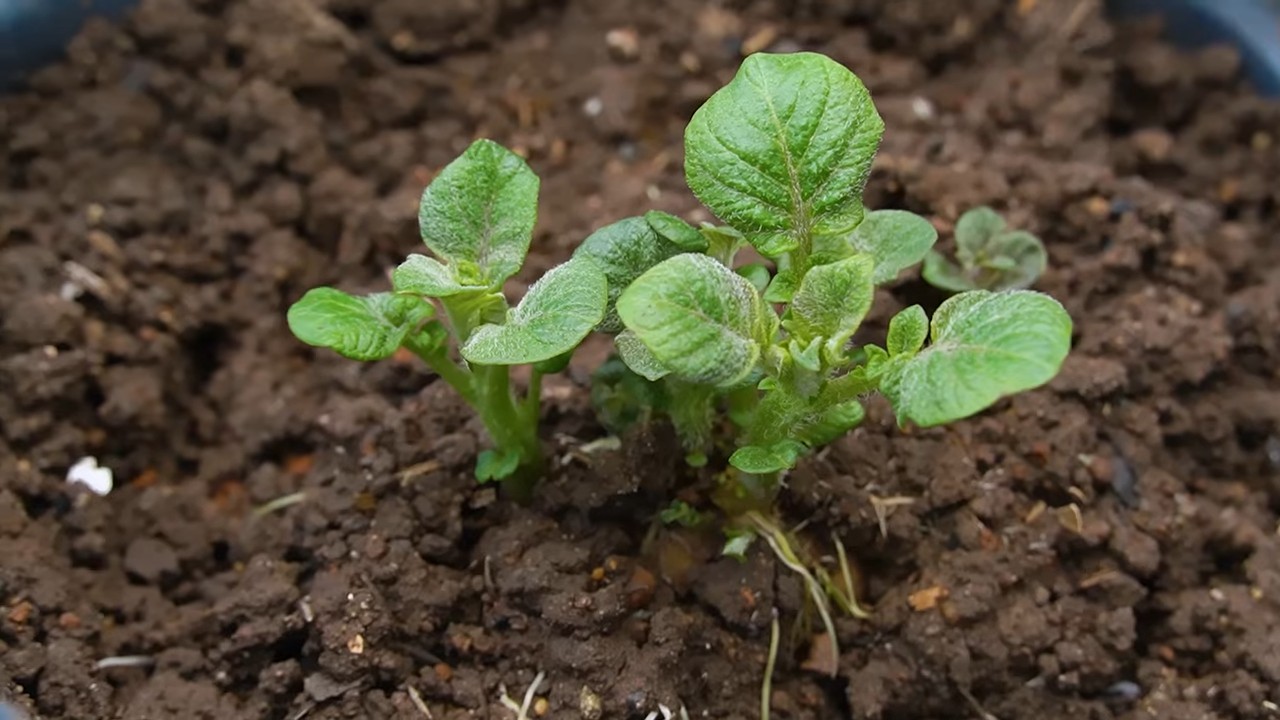
Conclusion
So, there you have it! Mastering year-round tomato growing isn’t just a pipe dream; it’s an achievable reality with a little planning and the right techniques. We’ve explored the essential elements, from selecting the perfect varieties to creating a controlled environment that mimics the ideal conditions for tomato production, regardless of the season.
Why is this DIY trick a must-try? Because it empowers you to enjoy the unparalleled flavor of homegrown tomatoes 365 days a year. Imagine the vibrant taste of a sun-ripened tomato bursting in your mouth in the dead of winter – a taste that store-bought varieties simply can’t replicate. Beyond the flavor, you gain control over the growing process, ensuring your tomatoes are free from harmful pesticides and packed with nutrients. You’re also reducing your carbon footprint by sourcing your food locally, right from your own home.
But the journey doesn’t end here. Feel free to experiment with different tomato varieties to discover which ones thrive best in your indoor setup. Consider adding companion plants like basil or marigolds to enhance flavor and deter pests naturally. You can also explore different hydroponic systems or soil mixes to optimize growth and yield. The possibilities are endless!
Don’t be afraid to adjust the lighting schedule or nutrient solutions based on your specific environment and the needs of your plants. Every indoor garden is unique, and what works for one person may not work for another. The key is to observe your plants closely, listen to their cues, and adapt your approach accordingly.
We encourage you to embark on this rewarding adventure of year-round tomato growing. It’s a fantastic way to connect with nature, learn new skills, and enjoy the fruits (or rather, vegetables) of your labor. The satisfaction of harvesting your own delicious tomatoes in the middle of winter is truly unmatched.
We’re eager to hear about your experiences! Share your successes, challenges, and tips in the comments below. Let’s create a community of year-round tomato growers who can learn from each other and inspire others to take the plunge. Your insights could be invaluable to someone just starting out.
Remember, patience and persistence are key. There will be ups and downs along the way, but the rewards of year-round tomato growing are well worth the effort. So, grab your seeds, set up your grow lights, and get ready to enjoy a taste of summer all year long! Let us know how your year-round tomato growing journey goes!
Frequently Asked Questions (FAQ)
What are the best tomato varieties for year-round indoor growing?
Choosing the right tomato variety is crucial for success in indoor, year-round growing. Determinate or dwarf varieties are generally preferred because they are more compact and require less space. Some excellent choices include:
* **Roma:** A classic determinate variety known for its paste-type tomatoes, perfect for sauces and canning.
* **Patio:** A compact determinate variety ideal for containers and small spaces, producing small to medium-sized tomatoes.
* **Tiny Tim:** An ultra-compact dwarf variety that produces cherry tomatoes, perfect for hanging baskets or small pots.
* **Early Girl:** While technically indeterminate, Early Girl is known for its early maturity and can be managed in a smaller space with proper pruning.
* **Celebrity:** A disease-resistant determinate variety that produces medium-sized tomatoes with excellent flavor.
Consider factors like disease resistance, fruit size, and taste preferences when making your selection. Experimenting with different varieties is also a great way to discover which ones thrive best in your specific indoor environment.
How much light do indoor tomato plants need?
Adequate lighting is essential for successful year-round tomato growing indoors. Tomato plants require at least 6-8 hours of direct light per day. Since natural sunlight may not be sufficient, especially during winter months, supplemental lighting is necessary.
LED grow lights are a popular and energy-efficient option. Look for full-spectrum LED lights that provide a balanced range of wavelengths to support all stages of plant growth. T5 fluorescent lights can also be used, but they are less energy-efficient than LEDs.
The distance between the lights and the plants is also important. Generally, keep the lights about 6-12 inches above the plants, adjusting as needed to prevent burning. Monitor your plants closely for signs of light stress, such as bleached leaves or stunted growth.
What is the ideal temperature and humidity for indoor tomato plants?
Maintaining the right temperature and humidity levels is crucial for optimal tomato growth. The ideal temperature range for tomato plants is between 70-80°F (21-27°C) during the day and 60-70°F (15-21°C) at night.
Humidity levels should be kept between 40-60%. High humidity can lead to fungal diseases, while low humidity can cause stress and hinder pollination. Use a humidifier or dehumidifier to adjust humidity levels as needed.
Good air circulation is also important to prevent fungal diseases. Use a fan to gently circulate air around the plants.
How often should I water my indoor tomato plants?
Watering frequency depends on several factors, including the size of the pot, the type of soil, and the temperature and humidity levels. Generally, water your tomato plants when the top inch of soil feels dry to the touch.
Water deeply, ensuring that the entire root ball is moistened. Avoid overwatering, as this can lead to root rot. Use a well-draining potting mix to prevent waterlogging.
Consider using a self-watering system or a moisture meter to help you determine when to water.
What kind of fertilizer should I use for indoor tomato plants?
Tomato plants are heavy feeders and require regular fertilization. Use a balanced fertilizer with an NPK ratio (nitrogen, phosphorus, potassium) of 10-10-10 or 14-14-14.
During the vegetative stage (before flowering), use a fertilizer with a slightly higher nitrogen content to promote leafy growth. Once the plants start to flower, switch to a fertilizer with a higher phosphorus and potassium content to support fruit development.
Follow the instructions on the fertilizer label carefully. Avoid over-fertilizing, as this can damage the plants.
How do I pollinate indoor tomato plants?
Tomato plants are self-pollinating, but they may need some assistance indoors, where there are no bees or wind to help with pollination.
You can hand-pollinate your tomato plants by gently shaking the flower clusters or using a small brush to transfer pollen from one flower to another. You can also use a vibrating device, such as an electric toothbrush, to vibrate the flowers and release pollen.
Pollinating during the warmest part of the day, when the pollen is driest, is best.
How do I deal with pests and diseases in my indoor tomato garden?
Even in a controlled indoor environment, pests and diseases can still be a problem. Regularly inspect your plants for signs of infestation or disease.
Common pests include aphids, spider mites, and whiteflies. Control these pests with insecticidal soap, neem oil, or beneficial insects like ladybugs.
So, there you have it! Mastering year-round tomato growing isn’t just a pipe dream; it’s an achievable reality with a little planning and the right techniques. We’ve explored the essential elements, from selecting the perfect varieties to creating a controlled environment that mimics the ideal conditions for tomato production, regardless of the season.
Why is this DIY trick a must-try? Because it empowers you to enjoy the unparalleled flavor of homegrown tomatoes 365 days a year. Imagine the vibrant taste of a sun-ripened tomato bursting in your mouth in the dead of winter – a taste that store-bought varieties simply can’t replicate. Beyond the flavor, you gain control over the growing process, ensuring your tomatoes are free from harmful pesticides and packed with nutrients. You’re also reducing your carbon footprint by sourcing your food locally, right from your own home.
But the journey doesn’t end here. Feel free to experiment with different tomato varieties to discover which ones thrive best in your indoor setup. Consider adding companion plants like basil or marigolds to enhance flavor and deter pests naturally. You can also explore different hydroponic systems or soil mixes to optimize growth and yield. The possibilities are endless!
Don’t be afraid to adjust the lighting schedule or nutrient solutions based on your specific environment and the needs of your plants. Every indoor garden is unique, and what works for one person may not work for another. The key is to observe your plants closely, listen to their cues, and adapt your approach accordingly.
We encourage you to embark on this rewarding adventure of year-round tomato growing. It’s a fantastic way to connect with nature, learn new skills, and enjoy the fruits (or rather, vegetables) of your labor. The satisfaction of harvesting your own delicious tomatoes in the middle of winter is truly unmatched.
We’re eager to hear about your experiences! Share your successes, challenges, and tips in the comments below. Let’s create a community of year-round tomato growers who can learn from each other and inspire others to take the plunge. Your insights could be invaluable to someone just starting out.
Remember, patience and persistence are key. There will be ups and downs along the way, but the rewards of year-round tomato growing are well worth the effort. So, grab your seeds, set up your grow lights, and get ready to enjoy a taste of summer all year long! Let us know how your year-round tomato growing journey goes!
Frequently Asked Questions (FAQ)
What are the best tomato varieties for year-round indoor growing?
Choosing the right tomato variety is crucial for success in indoor, year-round growing. Determinate or dwarf varieties are generally preferred because they are more compact and require less space. Some excellent choices include:
* **Roma:** A classic determinate variety known for its paste-type tomatoes, perfect for sauces and canning.
* **Patio:** A compact determinate variety ideal for containers and small spaces, producing small to medium-sized tomatoes.
* **Tiny Tim:** An ultra-compact dwarf variety that produces cherry tomatoes, perfect for hanging baskets or small pots.
* **Early Girl:** While technically indeterminate, Early Girl is known for its early maturity and can be managed in a smaller space with proper pruning.
* **Celebrity:** A disease-resistant determinate variety that produces medium-sized tomatoes with excellent flavor.
Consider factors like disease resistance, fruit size, and taste preferences when making your selection. Experimenting with different varieties is also a great way to discover which ones thrive best in your specific indoor environment.
How much light do indoor tomato plants need?
Adequate lighting is essential for successful year-round tomato growing indoors. Tomato plants require at least 6-8 hours of direct light per day. Since natural sunlight may not be sufficient, especially during winter months, supplemental lighting is necessary.
LED grow lights are a popular and energy-efficient option. Look for full-spectrum LED lights that provide a balanced range of wavelengths to support all stages of plant growth. T5 fluorescent lights can also be used, but they are less energy-efficient than LEDs.
The distance between the lights and the plants is also important. Generally, keep the lights about 6-12 inches above the plants, adjusting as needed to prevent burning. Monitor your plants closely for signs of light stress, such as bleached leaves or stunted growth.
What is the ideal temperature and humidity for indoor tomato plants?
Maintaining the right temperature and humidity levels is crucial for optimal tomato growth. The ideal temperature range for tomato plants is between 70-80°F (21-27°C) during the day and 60-70°F (15-21°C) at night.
Humidity levels should be kept between 40-60%. High humidity can lead to fungal diseases, while low humidity can cause stress and hinder pollination. Use a humidifier or dehumidifier to adjust humidity levels as needed.
Good air circulation is also important to prevent fungal diseases. Use a fan to gently circulate air around the plants.
How often should I water my indoor tomato plants?
Watering frequency depends on several factors, including the size of the pot, the type of soil, and the temperature and humidity levels. Generally, water your tomato plants when the top inch of soil feels dry to the touch.
Water deeply, ensuring that the entire root ball is moistened. Avoid overwatering, as this can lead to root rot. Use a well-draining potting mix to prevent waterlogging.
Consider using a self-watering system or a moisture meter to help you determine when to water.
What kind of fertilizer should I use for indoor tomato plants?
Tomato plants are heavy feeders and require regular fertilization. Use a balanced fertilizer with an NPK ratio (nitrogen, phosphorus, potassium) of 10-10-10 or 14-14-14.
During the vegetative stage (before flowering), use a fertilizer with a slightly higher nitrogen content to promote leafy growth. Once the plants start to flower, switch to a fertilizer with a higher phosphorus and potassium content to support fruit development.
Follow the instructions on the fertilizer label carefully. Avoid over-fertilizing, as this can damage the plants.
How do I pollinate indoor tomato plants?
Tomato plants are self-pollinating, but they may need some assistance indoors, where there are no bees or wind to help with pollination.
You can hand-pollinate your tomato plants by gently shaking the flower clusters or using a small brush to transfer pollen from one flower to another. You can also use a vibrating device, such as an electric toothbrush, to vibrate the flowers and release pollen.
Pollinating during the warmest part of the day, when the pollen is driest, is best.
How do I deal with pests and diseases in my indoor tomato garden?
Even in a controlled indoor environment, pests and diseases can still be a problem. Regularly inspect your plants for signs of infestation or disease.
Common pests include aphids, spider mites, and whiteflies. Control these pests with insecticidal soap, neem oil, or beneficial insects like ladybugs.
Common diseases include powdery mildew, early blight, and blossom end rot. Prevent these diseases by providing good air circulation, avoiding overwatering, and using disease-resistant varieties.
If you encounter a disease, remove the affected leaves or plants immediately and treat with a fungicide if necessary.
How long does it take to grow tomatoes indoors?
The time it takes to grow tomatoes indoors depends on the variety, the growing conditions, and your level of experience. Generally, it takes about 60-85 days from transplanting to harvest.
Start your seeds indoors 6-8 weeks before you plan to transplant them into their final containers. Provide adequate light, warmth, and moisture during the seedling stage.
Once the plants are established, provide them with the necessary light, water, and nutrients to support growth and fruit development. Be patient and persistent, and you will be rewarded with a bountiful harvest of delicious homegrown tomatoes.

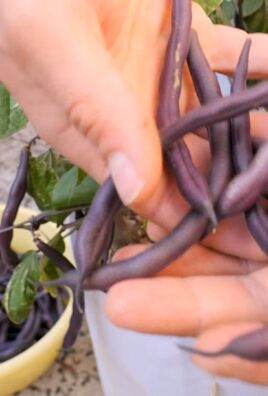
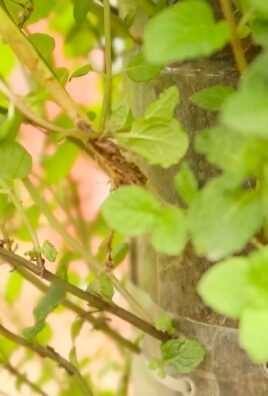
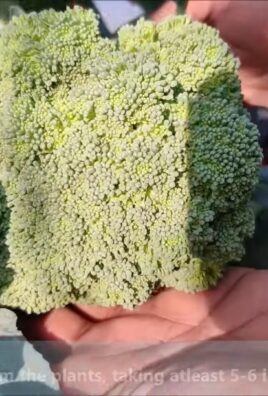
Leave a Comment